#day of dancing
Explore tagged Tumblr posts
Text
Orbiting a Memory
Thanks to the @go-minisode-minibang, I'm so excited to share this dreamy and lovingly detailed illustration by @altonthebard:

It accompanies my new fan fiction, Orbiting a Memory: a dreamy, eldritch tale full of visions, magic, and dancing! In the year 1634, Agnes Nutter and Galileo are each influencing - or preparing to influence - the world in their own ways. But where are Agnes' prophecies coming from? Saraqael, full of loneliness and longing and serving as both muse and puppet master, knows the answer to that.
Have you ever wondered what would have happened if one small, important conversation had changed the course of everything between Aziraphale and Crowley? On a magical night that no one will remember, Saraqael shares some secrets, spreads some hope, and inadvertently makes sure that's exactly what happens.
Or does it?
I'm delighted to share the release of this illustration and story as part of my Good Omens Day of ✨Dance✨! Please go share some love (and reblogs!) with all the artists!
#ineffable dance#day of dancing#saraqael#good omens fanart#good omens fanfiction#canon compliant#forgiveness#first kiss#good omens dancing#memory shenanigans#aziraphale#crowley#aziraphale and crowley#aziracrow#ineffable lovers#ineffable husbands#agnes nutter#galileo#good omens art#good omens#ineffable fandom#ineffable fanart#good omens fandom
206 notes
·
View notes
Text
Sharing these three smitten couples as part of my Good Omens Day of ✨Dance✨! I love the colors and textures of each pose, this is lovely!
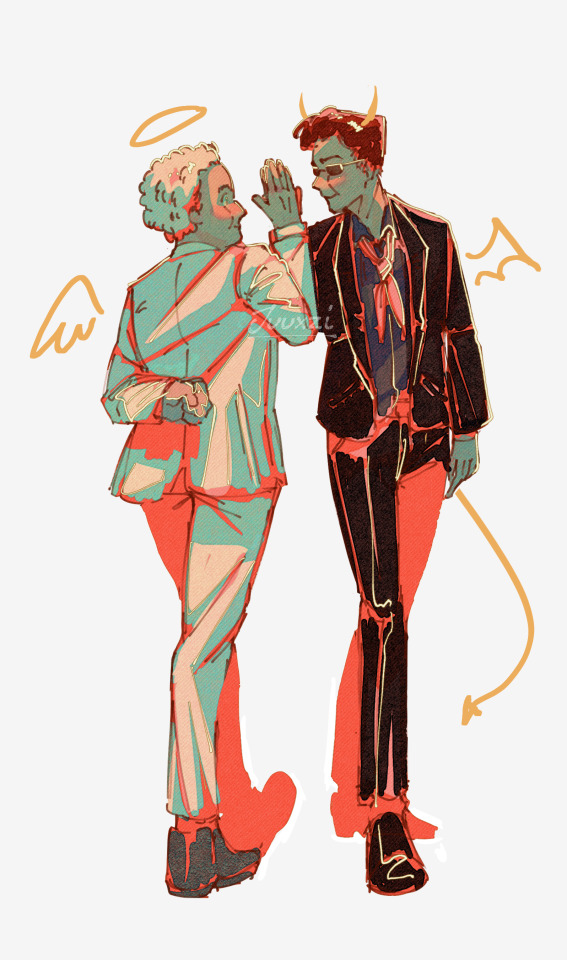
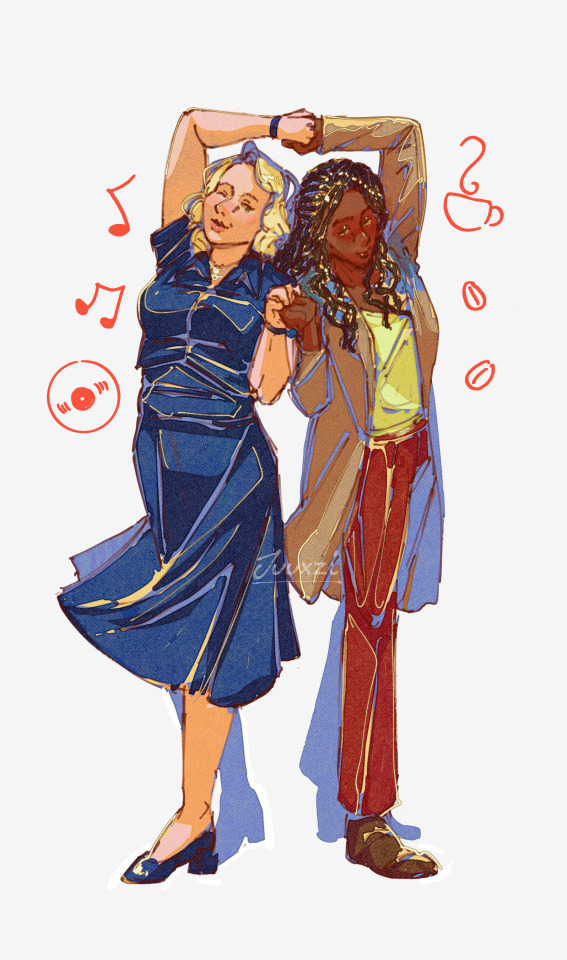

Love like yours will surely come my way
#ineffable dance#day of dancing#good omens dancing#good omens fanart#good omens art#good omens#aziraphale#crowley#aziraphale and crowley#aziracrow#ineffable lovers#ineffable husbands#ineffable fandom#ineffable fanart#good omens fandom#beelzebub good omens#gabriel good omens#nina good omens#maggie good omens#good omens season 2
58K notes
·
View notes
Text
Good Omens' Day of Dance
It's nearly time! My blog on Sunday will be dedicated to sharing some amazing Good Omens fanart that features ✨dancing✨!

I love the shapes and lines that create a sense of energy and motion for the dancers, and the expressions on their faces sharing their joy. Soft, tender, playful, joyful, creative, unique, sensual, sexy, and scorching... the 50+ pieces waiting patiently in my queue tonight offer something for everyone 😍
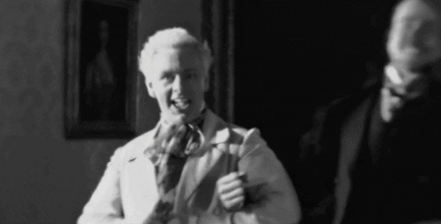
Want to follow along? Posting will start in 9 hours; you can find all of my Ineffable Dance posts here! Please go share some love (and reblogs!) with all the artists!

Why am I doing this? For the love of the art and of dance! And to celebrate: my Good Omens minisode fic for the @go-minisode-minibang and its companion illustration by the wonderful @altonthebard both feature a lovely dance scene...and we'll be releasing them tomorrow!
Edit: Here it is! Orbiting a Memory featuring a gorgeous illustration by @altonthebard
(The story and the art also star Saraqael as a main character! There's not nearly enough Saraqael fan art out there, but here's one of my favorites from @mistysblueboxstuff.)

PS - If you have GO dance-themed art or other creative works that you'd like me to add to the queue, there's still time to send me a link!
#ineffable dance#day of dancing#good omens dancing#good omens fanart#good omens art#good omens#ineffable fandom#ineffable fanart#good omens fandom#good omens fanfiction#gomm 2024#saraqael#aziraphale and crowley#aziraphale#crowley#ineffable lovers#ineffable husbands
66 notes
·
View notes
Text
Good Omens' Day of Dance
Please reblog! Calling all artists with Good Omens dance-themed works!
It was an absolute pleasure to write a Good Omens Minisode for the @go-minisode-minibang. My brilliant artist partner @altonthebard and I are going to release our paired works in 2 days!!
The story and the illustration include a beautiful scene with Aziraphale and Crowley dancing 🥰 To celebrate, my blog on Sunday will be dedicated to sharing some of the amazing Good Omens fanart I've found that features ✨dancing✨!
If you have art you'd like me to add to the queue, please send me the link!
#ineffable dance#day of dancing#good omens dancing#good omens fanart#good omens art#good omens#ineffable fandom#ineffable fanart#good omens fandom#good omens fanfiction#gomm 2024
15 notes
·
View notes
Text
Why do we segregate sports by sex?
Disclaimer: this video was intended as a fun look at the inconsistent logic of gender segregation in sports, but as a short-form video, it naturally does not go into much nuance. One thing I want to make clear is that I do believe we should be making sports more inclusive to trans and intersex athletes, and it seems to me that a great starting point would be to stop gender segregating sports that really don’t need it. Like archery!
#archer#archery#sports#olympics#one day I’ll work up the courage to talk about gender in pole dance#but not this day
13K notes
·
View notes
Photo
Sharing this playful piece as a special bonus on the day after my Good Omens Day of ✨Dance✨! I hope you all enjoyed the collection yesterday as much as I enjoyed sharing it! Please go spread some love (and reblogs!) to all the artists!

It’s not what you would call “good dancing”
#ineffable dance#day of dancing#good omens dancing#good omens fanart#good omens art#good omens#aziraphale#crowley#aziraphale and crowley#aziracrow#ineffable lovers#ineffable husbands#ineffable fandom#ineffable fanart#good omens fandom
52K notes
·
View notes
Text
Sometimes something simple could be really special, after all.
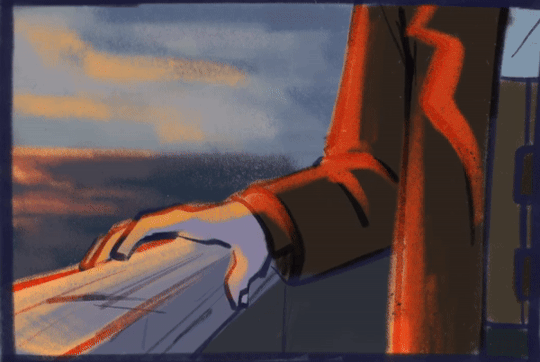
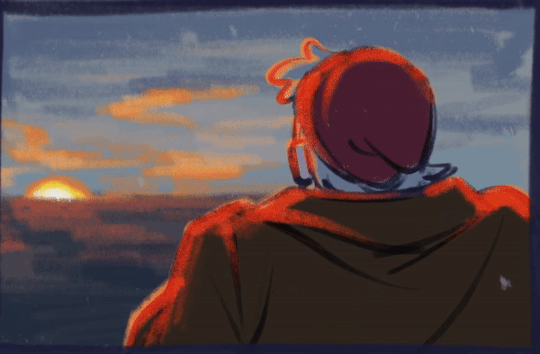
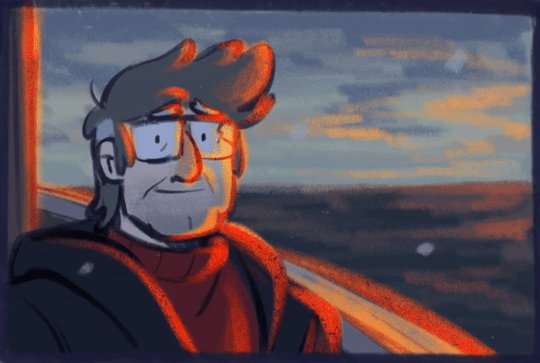
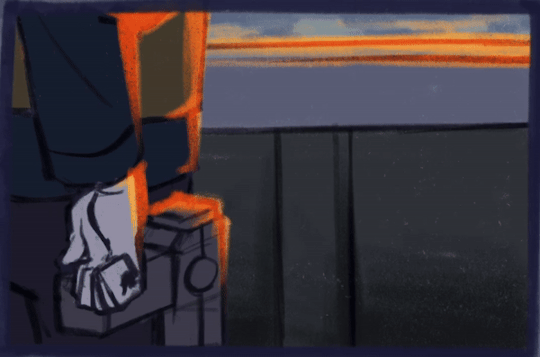
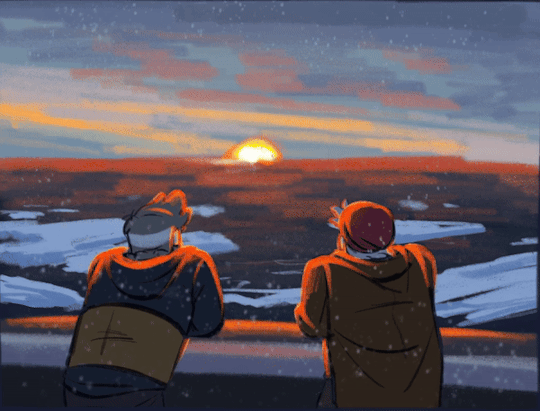
#worked on this for like 3-4 days or so#based on fic simply special by impish_nature#song: jesus tap dancing christ - fruit bats#gravity falls#animation#stan pines#ford pines#stan o war#azzy art
11K notes
·
View notes
Text
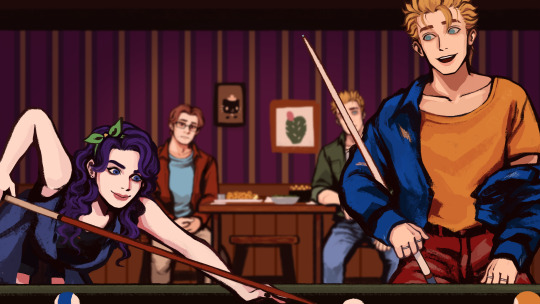
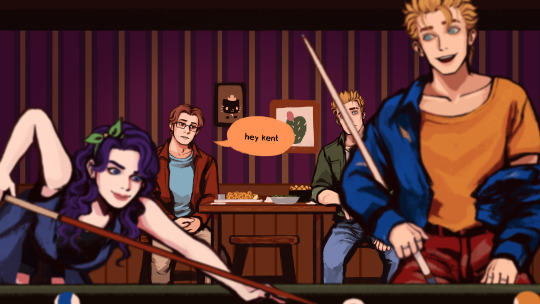
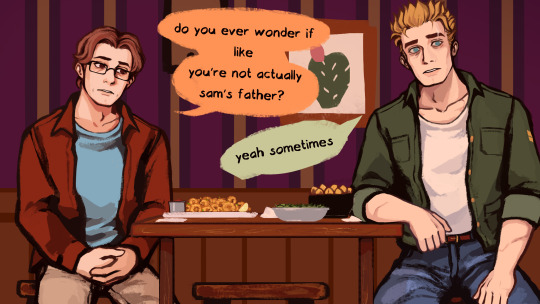
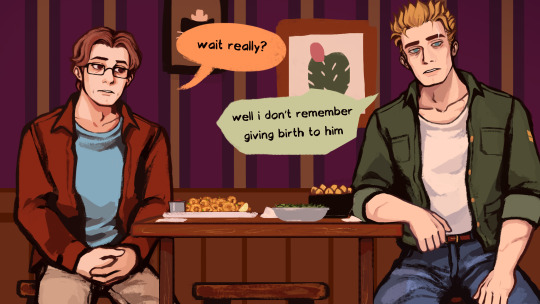
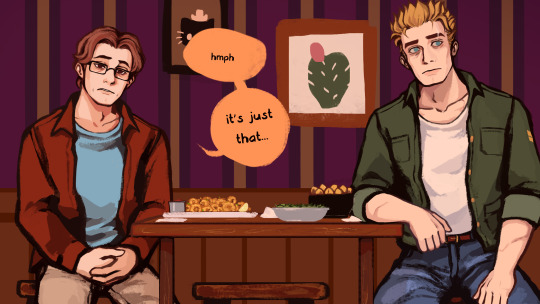
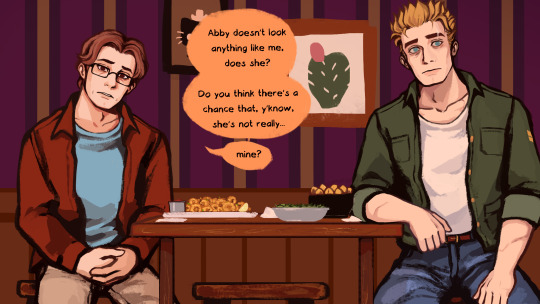
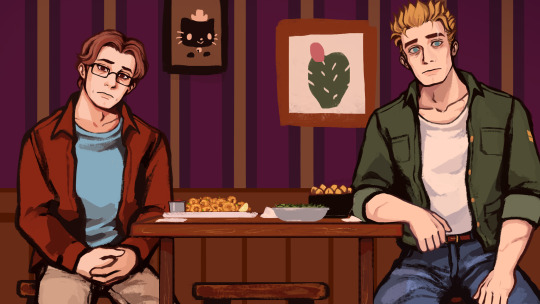
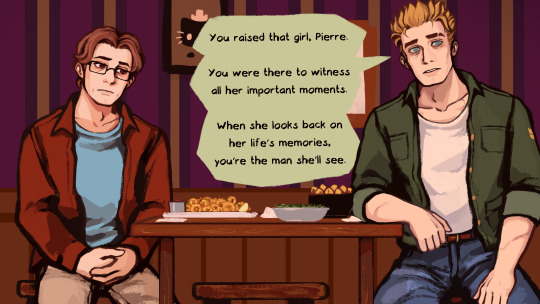
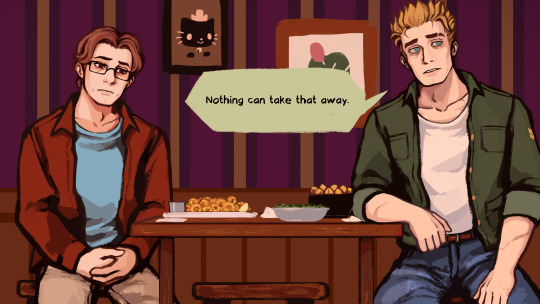

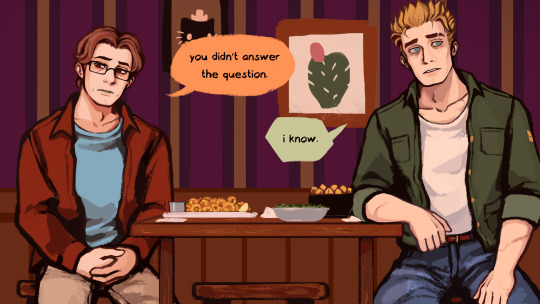
"Don't tell Pierre; he has jealousy issues."
#stardew valley#stardew valley fanart#sdv abigail#sdv sam#sdv pierre#sdv kent#my art#happy father's day again!#how could i not add to the stardew daddy series#demetrius is there too he’s just dancing with robin right now
3K notes
·
View notes
Text
This might be the last time we see Tom Hardy Venom on screen so I just wanna say, from the bottom of my monster fucker heart, it has been an absolute pleasure to go through this series with you all these last 6 years.

#venom#venom 2018#eddie brock#anne weying#venom the last dance#mrs chen#Tom Hardy#you will always be iconic to me#and I will remember you so fondly forever#symbrock#venom let there be carnage#let there be carnage#I’m in shambles#I’ve been crying all day#I’ve had so many experiences because of these movies#I have one of my very best friends in the world because of this series#and I will cry so so hard during this film
8K notes
·
View notes
Text
Sharing this evocative piece in celebration of my Good Omens Day of ✨Dance✨! I love the implication of Crowley's right hand, pressing them so close together!
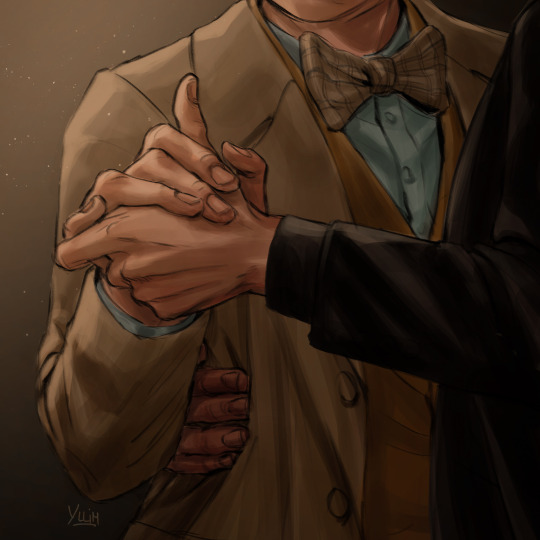
gently swaying to the nightingale sang in berkeley square
#ineffable dance#day of dancing#good omens dancing#good omens fanart#good omens art#good omens#aziraphale#crowley#aziraphale and crowley#aziracrow#ineffable lovers#ineffable husbands#ineffable fandom#ineffable fanart#good omens fandom
15K notes
·
View notes
Text

surprise it's yuri!!!in 2024
#my art#yuri on ice#yuri!!! on ice#yoi#fanart#katsuki yuuri#victor nikiforov#victuuri#yoi fanart#this was the secret 4th thing that lost the poll jdsfgsdfjj#id been thinking about doing a tribute since getting that one ask but i didn't anticipate how Into it i would get once i started#the way i flew through this piece .. just over 1 day??? insane#yuri is /that/ ingrained in my muscle memory#I was looking at refs and ?? id forgotten how wild this show was#we just got all of that?? a pole dance a proposal a kiss a pair skate....and it was ALL canon? incredible#AND YEAH UNPROMPTED HISTORY MAKER PLAYS IN MY YT MIX#dean fujioka jumpscare#also looking back at my old yoi pieces was so wild. that ws really 8 years ago huh.#little bit of an ego boost looking at how far ive come#but also im just grateful idk sry 2 b sappy on main#i hope 16 year old me is happy that i did this bc im happy i did this#edit bc i forgot a bunch of white outline i am a fraud
12K notes
·
View notes
Text
Happy Public Domain Day 2025 to all who celebrate

If you'd like an essay-formatted version of this post to read or share, here's a link to it on pluralistic.net, my surveillance-free, ad-free, tracker-free blog:
https://pluralistic.net/2024/12/17/dastar-dly-deeds/#roast-in-piss-sonny-bono

In 1976, Congress set fire to the country's libraries; in 1998, they did it again. Today, in 2024, the flames have died down, and out of the ashes a new public domain is growing. Happy Public Domain Day 2025 to all who celebrate!
For most of US history, copyright was something you had to ask for. To copyright a work, you'd send a copy to the Library of Congress and they'd issue you a copyright. Not only did that let you display a copyright mark on your work – so people would know they weren't allowed to copy it without your permission – but if anyone wanted to figure out who to ask in order to get permission to copy or adapt a work, they could just go look up the paperwork at the LoC.
In 1976, Congress amended the Copyright Act to eliminate the "formality" of copyright registration. Now, all creative works of human authorship were copyrighted "at the moment of fixation" – the instant you drew, typed, wrote, filmed, or recorded them. From a toddler's nursery-school finger-painting to a graffiti mural on a subway car, every creative act suddenly became an article of property.
But whose property? That was on you to figure out, before you could copy, publish, perform, or preserve the work, because without registration, permissions had to start with a scavenger hunt for the person who could grant it. Congress simultaneously enacted a massive expansion of property rights, while abolishing the title registry that spelled out who owned what. As though this wasn't enough, Congress reached back in time and plopped an extra 20 years' onto the copyrights of existing works, even ones whose authors were unknown and unlocatable.
For the next 20 years, creative workers, archivists, educators and fans struggled in the face of this regime of unknowable property rights. After decades of well-documented problems, Congress acted again: they made it worse.
In 1998, Congress passed the Sonny Bono Copyright Act, AKA the Mickey Mouse Preservation Act, AKA the Copyright Term Extension Act. The 1998 Act tacked another 20 years onto copyright terms, but not just for works that were still in copyright. At the insistence of Disney, Congress actually yanked works out of the public domain – works that had been anthologized, adapted and re-issued – and put them back into copyright for two more decades. Copyright stretched to the century-plus "life plus 70 years" term. Nothing entered the public domain for the next 20 years.
So many of my comrades in the fight for the public domain were certain that this would happen again in 2018. In 2010, e-book inventor and Project Gutenberg founder Michael S Hart and I got into a friendly email argument because he was positive that in 2018, Congress would set fire to the public domain again. When I insisted that there was no way this could happen given the public bitterness over the 1998 Act, he told me I was being naive, but said he hoped that I was right.
Michael didn't live to see it, but in 2019, the public domain opened again. It was an incredible day:
https://archive.org/details/ClosingKeynoteForGrandReopeningOfThePublicDomainCoryDoctorowAtInternetArchive
No one has done a better job of chronicling the fortunes of our fragile, beautiful, bounteous public domain than Jennifer Jenkins and James Boyle of Duke University's Center for the Study of the Public Domain. Every year from 2010-2019, Boyle and Jenkins chronicled the works that weren't entering the public domain because of the 1998 Act, making sure we knew what had been stolen from our cultural commons. In so many cases, these works disappeared before their copyrights expired, for example, the majority of silent films are lost forever.
Then, in 2019, Jenkins and Boyle got to start cataloging the works that were entering the public domain, most of them from 1923 (copyright is complicated, so not everything that entered the public domain in 2019 was from that year):
https://web.law.duke.edu/cspd/publicdomainday/2019/
Every year since, they've celebrated a new bumper crop. Last year, we got Mickey Mouse!
https://pluralistic.net/2023/12/15/mouse-liberation-front/#free-mickey
In addition to numerous other works – by Woolf, Hemingway, Doyle, Christie, Proust, Hesse, Milne, DuBois, Frost, Chaplin, Escher, and more:
https://pluralistic.net/2023/12/20/em-oh-you-ess-ee/#sexytimes
Now, 2024 was a fantastic year for the public domain, but – as you'll see in the 2025 edition of the Public Domain Day post – 2025 is even better:
https://web.law.duke.edu/cspd/publicdomainday/2025/
So what's entering the public domain this year? Well, for one thing, there's more of the stuff from last year, which makes sense: if Hemingway's first books entered the PD last year, then this year, we'll the books he wrote next (and this will continue every year until we catch up with Hemingway's tragic death).
There are some big hits from our returning champions, like Woolf's To the Lighthouse and A Farewell to Arms from Hemingway. Jenkins and Boyle call particular attention to one book: Faulkner's The Sound and the Fury, its title taken from a public domain work by Shakespeare. As they write, Faulkner spoke eloquently about the nature of posterity and culture:
[Humanity] is immortal, not because he alone among creatures has an inexhaustible voice, but because he has a soul, a spirit capable of compassion and sacrifice and endurance…The poet’s voice need not merely be the record of man, it can be one of the props, the pillars to help him endure and prevail.
The main attraction on last year's Public Domain Day was the entry of Steamboat Willie – the first Mickey Mouse cartoon – into the public domain. This year, we're getting a dozen new Mickey cartoons, including the first Mickey talkie:
https://en.wikipedia.org/wiki/Mickey_Mouse_(film_series)#1929
Those 12 shorts represent a kind of creative explosion for the Disney Studios. Those early Mickey cartoons were, each and every one, a hybrid of new copyrighted works and the public domain. The backbone of each Mickey short was a beloved, public domain song, with Mickey's motion synched to the beat (animators came to call this "mickey mousing"). In 1929, there was a huge crop of public domain music that anyone could use this way:
Blue Danube, Pop Goes the Weasel, Yankee Doodle, Here We Go Round the Mulberry Bush, Ach Du Lieber Augustin, Listen to the Mocking Bird, A-Hunting We Will Go, Dixie, The Girl I Left Behind Me, a tune known as the snake charmer song, Coming Thru the Rye, Mary Had a Little Lamb, Auld Lang Syne, Aloha ‘Oe, Turkey in the Straw, My Bonnie Lies Over the Ocean, Habanera and Toreador Song from Carmen, Lizst’s Hungarian Rhapsody No. 2, and Goodnight, Ladies.
These were recent compositions, songs that were written and popularized in the lifetimes of the parents and grandparents who took their kids to the movies to see Mickey shorts like "The Barn Dance," "The Opry House" and "The Jazz Fool." The ability to plunder this music at will was key to the success of Mickey Mouse and Disney. Think of all the Mickeys and Disneys we've lost by locking up the public domain for the past half-century!
This year, we're getting some outstanding new old music for our public domain. The complexities of copyright terms mean that compositions from 1929 are entering the public domain, but we're only getting recordings from 1924. 1924's outstanding recordings include:
George Gershwin performing Rhapsody in Blue, Jelly Roll Morton playing Shreveport Stomp, and an early recording from contralto and civil rights icon Marian Anderson, who is famous for her 1939 performance to an integrated audience of over 75,000 people at the Lincoln Memorial. Anderson’s 1924 recording is of the spiritual Nobody Knows the Trouble I’ve Seen.
While the compositions include Singin' in the Rain, Ain't Misbehavin', An American in Paris, Bolero, (What Did I Do to Be So) Black and Blue, Tiptoe Through the Tulips, Happy Days Are Here Again, What Is This Thing Called, Love?, Am I Blue? and many, many more.
On the art front, we're getting Salvador Dali's earliest surrealist masterpieces, like Illumined Pleasures, The Accommodations of Desire, and The Great Masturbator. Dali's contemporaries are not so lucky: after a century, the early history of the works of Magritte are so muddy that it's impossible to say whether they are in or out of copyright.
But there's plenty of art with clearer provenance that we can welcome into the public domain this year, most notably, Popeye and Tintin. As the first Popeye and Tintin comics go PD, so too do those characters.
The idea that a fictional character can have a copyright separate from the stories they appear in is relatively new, and it's weird and very stupid. Courts have found that the Batmobile is a copyrightable character (Batman won't enter the public domain until 2035).
Copyright for characters is such a muddy, gross, weird idea. The clearest example of how stupid this gets comes from Sherlock Holmes, whose canon spans many years. The Doyle estate – a rent-seeking copyright troll – claimed that Holmes wouldn't enter the public domain until every Holmes story was in the public domain (that's this year, incidentally!).
This didn't fly, so their next gambit was to claim copyright over those aspects of Holmes's character that were developed later in the stories. For example, they claimed that Holmes didn't show compassion until the later stories, and, on that basis, sued the creators of the Enola Holmes TV show for depicting a gender-swapped Sherlock who wasn't a total dick:
https://www.theguardian.com/books/2020/dec/22/lawsuit-copyright-warmer-sherlock-holmes-dismissed-enola-holmes
As the Enola lawyers pointed out in their briefs, this was tantamount to a copyright over emotions: "Copyright law does not allow the ownership of generic concepts like warmth, kindness, empathy, or respect, even as expressed by a public domain character – which, of course, belongs to the public, not plaintiff."
When Mickey entered the public domain last year, Jenkins did an excellent deep dive into which aspects of Mickey's character and design emerged when:
https://web.law.duke.edu/cspd/mickey/
Jenkins uses this year's entry of Tintin and Popeye into the public domain to further explore the subject of proprietary characters.
Even though copyright extends to characters, it only covers the "copyrightable" parts of those characters. As the Enola lawyers wrote, the generic character traits (their age, emotional vibe, etc) are not protected. Neither is anything "trivial" or "minuscule" – for example, if a cartoonist makes a minor alteration to the way a character's pupils or eyes are drawn, that's a minor detail, not a copyrightable element.
The biggest impediment to using public domain characters isn't copyright, it's trademark. Trademark is very different from copyright: foundationally, trademark is the right to protect your customers from being deceived by your competitors. Coke can use trademark to stop Pepsi from selling its sugary drinks in Coke cans – not because it owns the word "Coke" or the Coke logo, but because it has been deputized to protect Coke drinkers from being tricked into buying not-Coke, thinking that they're getting the true Black Waters of American Imperialism.
Companies claim trademarks over cartoon characters all the time, and license those trademarks on food, clothing, toys, and more (remember Popeye candy cigarettes?).
Indeed, Hearst Holdings claims a trademark over Popeye in many traditional categories, like cartoons, amusement parks, ads and clothes. They're also in the midst of applying for a Popeye NFT trademark (lol).
Does that mean you can't use Popeye in any of those ways? Nope! All you need to do is prominently mention that your use of Popeye is unofficial, not associated with Hearst, and dispel any chance of confusion. A unanimous Supreme Court decision (in Dastar) affirm your right to do so. You can also use Popeye in the title of your unauthorized Popeye comic, thanks to a case called Rogers v Grimaldi.
This all applies to Tintin, too – a big deal, given that Tintin is managed by a notorious copyright bully who delights in cruelly terrorizing fan artists. Tintin is joined in the public domain by Buck Rogers, another old-timey character whose owners are scumbag rent-seekers.
Congress buried the public domain alive in 1976, and dumped a load of gravel over its grave in 1998, but miraculously, we've managed to exhume the PD, and it has been revived and is showing signs of rude health.
2024 saw the blockbuster film adaptation of Wicked, based on the public domain Oz books. It also saw the publication of James, a celebrated retelling of Twain's Huck Finn from the perspective of Huck's enslaved sidekick.
This is completely normal. It's how art was made since time immemorial. The 40 year experiment in life without a public domain is at an end, and not a minute too soon.
You can piece together a complete-as-possible list of 2025's public domain (including the Marx Brothers' Cocoanuts, Disney's Skeleton Dance, and Del Ruth's Gold Diggers of Broadway) here:
https://onlinebooks.library.upenn.edu/cce/
#jennifer jenkins#duke center for the public domain#public domain day#trademark#tintin#popeye#copyfight#copyright#roast in piss sonny bono#james boyle#marx brothers#mickey mouse#ravel#bolero#faulkner#hemingway#virginia woolf#steinbeck#skeleton dance#gold diggers of broadway#dali#wicked
4K notes
·
View notes
Photo
Sharing this joyful, quirky freedom of dancing without a care in the world as part of my Good Omens Day of ✨Dance✨! I hope this level of playful unconcern is in their future!
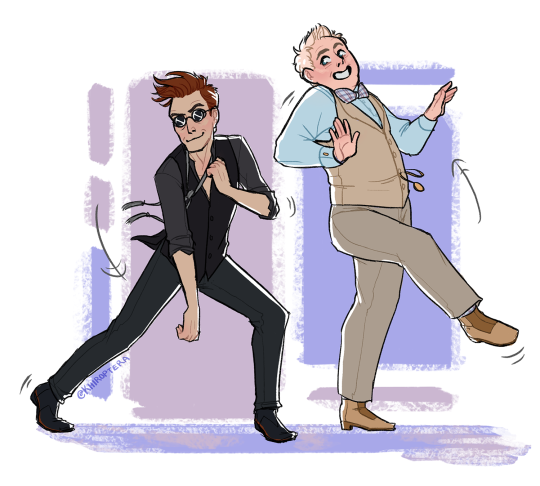

they’re doing their own thing and it’s awesome
#ineffable dance#day of dancing#good omens dancing#good omens fanart#good omens art#good omens#aziraphale#crowley#aziraphale and crowley#aziracrow#ineffable lovers#ineffable husbands#ineffable fandom#ineffable fanart#good omens fandom
11K notes
·
View notes
Text
Never not thinking about this…

#sam reid#has sam taken dance lessons before???#or did he want an excuse to study it#someone needs to ask one day#sam as a ballet dancer 🫠🫠
2K notes
·
View notes
Text


Viktor: *silent treatment*
Jayce: *dies*
#They're judging his entire bloodline#arcane#viktor#jayce talis#jayvik#heimerdinger#league of legends#art#fanart#artist on tumblr#digital art#mine#arcane fanart#it's been a long time since I draw canon!Jayvik like this#never a dull moment with them!#the day I'll stop torturing Jayce has not come yet (affectionate)#I hesitated between Sky or Heimerdinger but Sky is too nice that girl was not judgmental enough#Jayce just wants to build cute core memories with Viktor aww he speaks with his heart!#Viktor is not drunk enough to endure this franting love and blatant lack of consideration#he's not allergic to happiness but he better remains silent and not speak his truth or Jayce might not recover haha#he was also very close to make Jayce dance alone by kicking him with his crutch repetitively in front of everyone that day oops#I wanted to post a couple of alternative versions too since season 1 Jayce is never running out of dumb suggestions I'm afraid!#but I've accidentally erased the main file for the page 1 uugh so all I've got left is the .png version and it'd be too hard to modify it..
2K notes
·
View notes
Text
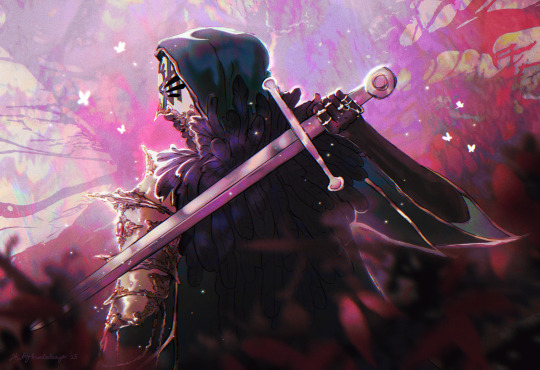
My blood beats so alive, might tear right through my skin <- me while drawing this in a frenzy
#sleep token#sleep token fanart#sleep token vessel#vessel sleep token#vessel#emergence#even in arcadia#show me how to dance forever#i feel so many things about emergence#gonna munch on the lyrics for days#also the new look???#knight vessel??? hello??#im gonna miss the fur tho#drawing feathers is my arch nemesis#but i love how the bg turned out in this one :::)
2K notes
·
View notes